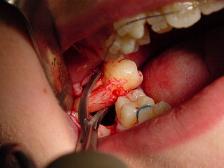Types of Dental Extractions and Diagnosis
- Extractions categorised into non-surgical (simple) and surgical
- Type of tooth and other factors determine the extraction type
- Dental x-ray image shows root shape and number
- X-ray helps in diagnosis and treatment planning
- X-ray is necessary for visualizing root size and shape
- Comprehensive history taking to determine tooth pain history
- Patient's medical history and previous extractions considered
- Clinical assessment of the tooth by the dentist
- Pre-extraction radiographs confirm diagnosis and aid in treatment planning
- Radiographs help in foreseeing difficulties and preparing appropriately
Consent and Communication
- Dentist explains treatment options and involved procedure
- Potential risks of extraction discussed
- Benefits of the procedure explained
- Consent process documented in clinical notes
- Gaining patient's permission is essential
Anesthesia and Pain Management
- Local anesthesia used for dental extractions
- Different anesthesia techniques available
- Patient's pain threshold considered for anesthesia dosage
- Proper pain management ensures patient comfort
- Dentist ensures pain relief throughout the procedure
Post-Extraction Care
- Post-operative instructions provided to the patient
- Proper wound care and oral hygiene emphasised
- Pain management strategies discussed
- Possible complications and their management explained
- Follow-up appointments scheduled for monitoring and healing evaluation
A dental extraction (also referred to as tooth extraction, exodontia, exodontics, or informally, tooth pulling) is the removal of teeth from the dental alveolus (socket) in the alveolar bone. Extractions are performed for a wide variety of reasons, but most commonly to remove teeth which have become unrestorable through tooth decay, periodontal disease, or dental trauma, especially when they are associated with toothache. Sometimes impacted wisdom teeth (wisdom teeth that are stuck and unable to grow normally into the mouth) cause recurrent infections of the gum (pericoronitis), and may be removed when other conservative treatments have failed (cleaning, antibiotics and operculectomy). In orthodontics, if the teeth are crowded, healthy teeth may be extracted (often bicuspids) to create space so the rest of the teeth can be straightened.
| Dental extraction | |
|---|---|
 Surgical extraction of an impacted molar | |
| ICD-9-CM | 23.0-23.1 |
| MeSH | D014081 |